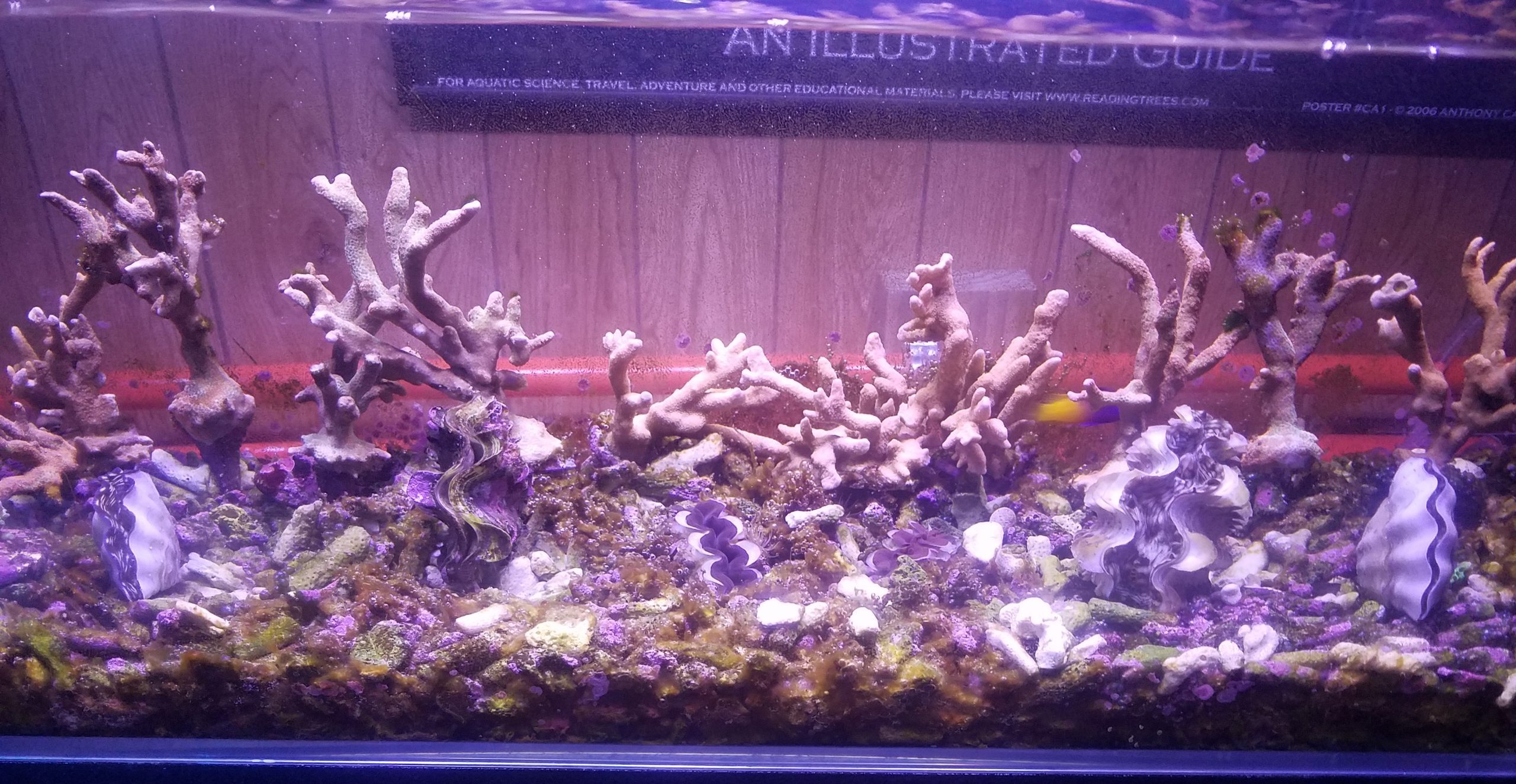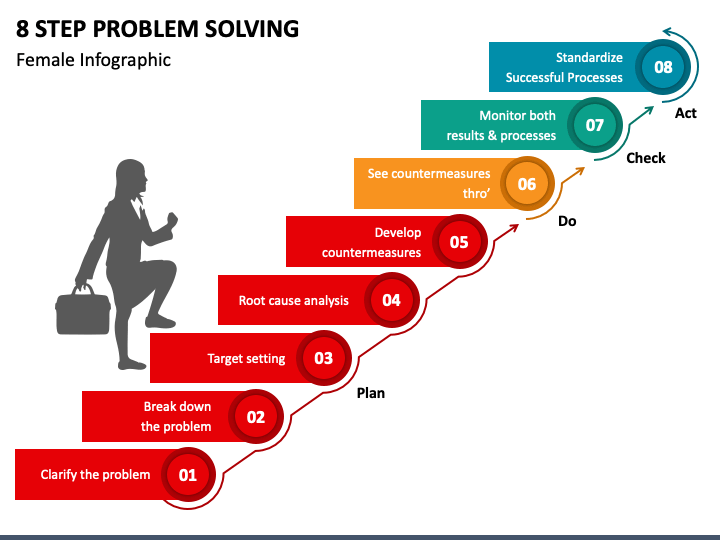
Preface: This Reef Mentoring article series is to document my recommendations to a hobbyist I have been mentoring. I am basically building a reef tank with his setup at my house and maintaining it for a year with weekly hands on sessions.
During the early 3-6 weeks of post cycling a reef tank you will typically encounter what most aquarists call the “Ugly Phase”. It can be a misnomer because this ugly phase symptoms can also happen even after a system has be running for some time. It really comes down to understanding what the triggers are that cause them. The relationships among parameters you can control, the biological life cycle stages your tank is in, and the livestock you introduce all play a part in creating a balanced ecosystem.
Problem Solving Process
When attempting to solve a problem, a data driven process should be used. There are many variations of the problem solving process but the simplified 4 phase version according to the American Society of Quality is identified in the below chart, and can be expanded up to 8 steps.


https://www.sketchbubble.com/en/presentation-8-step-problem-solving.html
Identify The Ugly Stuff
As with any problem solving process the first step is to accurately identify the problem. Some of the common issues we experience in this hobby are the following. I will list them and some of the great info that is already out on the internet. Why re-invent the wheel right? Just wanted to provide a short list of resource links that I believe get to the point. The problem today is that there is too much information and I want to summarize some key sites to the hobbyist I am mentoring that I agree with from my personal experience all these years.
Diatoms –
Below is a nice video from Everyday Aquarist’s Youtube Channel that covers some of the basics about diatoms. Ultimately diatoms may look ugly but they are essential and beneficial to the balanced ecosystem we are trying to create.
Dinoflagellates –
Matt Zahler’s article on MyFirstFishtank.com has a great write up on dinoflagellates and how to combat them based on all the current known practices. Dinoflagellates typically occur in the early stages when there is not enough nutrients in the water. The level shows an imbalance on the too “clean” side of the range.
Cyanobacteria
Greg Chernoff’s article on Algae Barn’s Website is a good summary on addressing cyanobacteria outbreaks.
In addition, I would like to add some personal experience that overdosing of amino acids cause cyanobacteria outbreaks as well. 2020 article touches on this when interviewing three industry experts.
Micro Algae film and Macro Algae
Micro algae films on the glass and emergence of macro algae on non-quarantined corals are usually a symptom of excess nutrients that are not being consumed by the corals. The ideal nutrient balance comes when the livestock uptakes enough nutrients as they are generated so that nuisance algae do not take hold. Macro algae can also be a good tool to help control nutrients as well. Algae Barn has a wealth of knowledge on all things algae related. There are many ways to control nuisance algae. You can do water changes, use chemicals or rely on natural biological solutions. I prefer the natural path. Selecting the correct cleanup crew at the right time and monitoring nutrient import/export levels regularly will validate your chosen solution is correct or not.
A recent presentation by Richard Ross (recorded by High Tide Aquatics Oakland) elaborate the choice of utilizing proper herbivores. I highly recommend it. The opinion may contradict some of the current approaches of nutrient control but it’s another method in the tool box that works when you think deeper about it in nature.
Bacterial Blooms
Bacterial blooms usually occur in any stage of the reef tank. It results from a sudden increase in organic waste in which the biological system is not able to handle it. The water gets cloudy from the the bacteria consuming the waste in the the water column. The biggest problem other than cloudy water is that the bacteria using up the oxygen in the water and killing the higher forms of livestock like fish.
Keith Berkelhamer from ReefBum has a great writeup that covers Diagnosing and Eliminating Cloudy Water. Take a look at his page since he’s a similar old schooler like myself and has been in the hobby for a long time.
Nutrient Ratio Control
In recent years a new nutrient ratio of 100:1 Nitrate (NO3) to Phosphate (PO4) have been discussed. This anecdotally match my system data and those of many aqua culturists. Maintaining this seems important. If you have to raise both Nitrates and Phosphates feeding more can help. But if the ratio is out of balance then a single component response is necessary.
One scenario, my test data trends show if my phosphates rise I notice nitrates are lower than the required ratio. Phosphates tend to drive nuisance algae growth and inhibit calcification in stony corals. My personal goals are to ensure there is enough nitrates for photosynthesis of my corals and limit phosphates to avoid nuisance issues.
Action 1: Raise Nitrates: I dose sodium nitrate into my system and my phosphate will usually lower on its own. Testing consistently will help you fine tune what your system needs. The Reef Mentoring tank required nitrate dosing since early introductions of certain corals showed recession once the Nitrates dropped below 3ppm yet the phosphates were only 0.03 ppm).
Action 2: Export Phosphates: I personally don’t like to use granular ferric oxide (GFO) since it can over strip the system if you use too much and is expensive. Vacuuming detritus during a large water change is the simplest path. Worst case I will dose Lanthanum Chloride to just reduce phosphates (Caution: this is not something I prescribe to beginners since it has some clear downsides if not careful). I know historically for my 510g system 20 drops will drop my PO4 0.02ppm and verified shortly after via testing. This can be a great option once you characterize/understand your system and read up on how to apply it safely.
Summary
All the “Ugly Phase” items listed above have one thing in common. System imbalance is the common cause for all these headaches. It is a combination between chemistry, nutrients, micro fauna, herbivores and everything in that food chain. But be forewarned that these do not only occur during the early stages of an established reef tank. They can happen at any time the environment is conducive to it. Test and monitor water parameters regularly to be sure you are in a safe range discussed in my previous article. Remember 0 ppm of either is not acceptable. As the system matures, your bioload can acclimate to match certain nutrient levels that match your maintenance practices. Once you determine your system’s state you are happy with, take a snapshot of all the water parameters and nutrient levels at that point in time. This will give you a custom success target to maintain for the future.










Incredibly informative. Paired with quality videos to help explain even further. This knowledge is essential. Excellent use of engineering verbiage and ideology. Incredibly applicable problem solving, critical thinking and deductive reasoning when isolating and excluding the numerous variables that cause the failures one faces in this hobby. Great work.